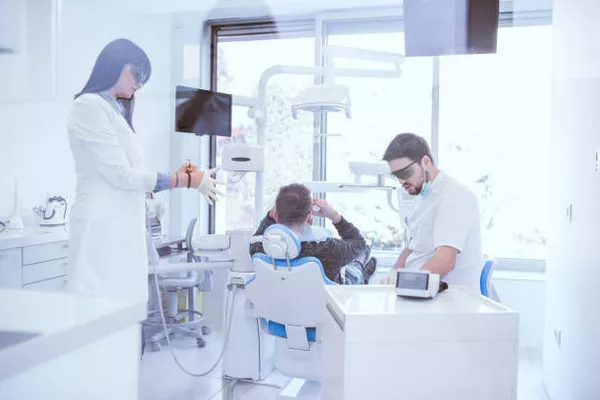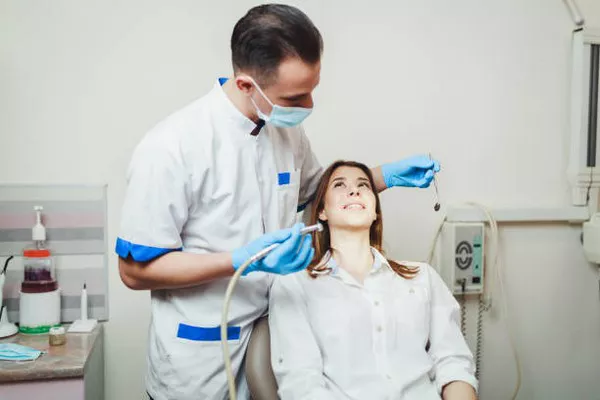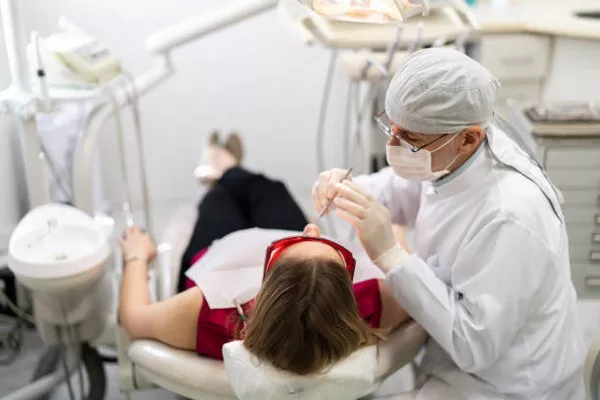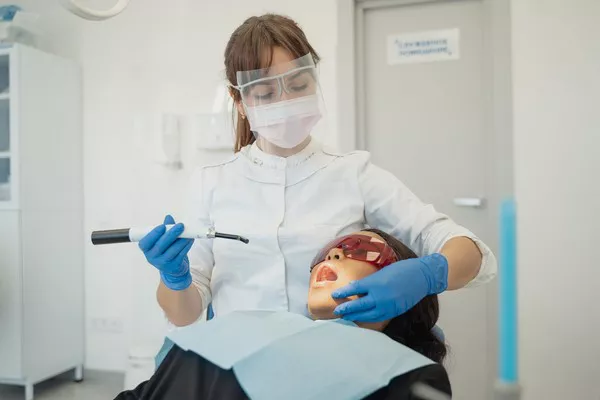Tooth veneer to adapt to the population of teeth deformity, coloring, uneven, etc., can be cosmetically, the specific method used needs to see the specific situation of your teeth.
Dental veneer is a method of veneer restoration in which the tooth surface is trimmed and then directly or indirectly covered with restorative materials to achieve the best shape and color of the tooth.
1, what circumstances can do dental veneer: 1, caries caused by incisor defect or tooth surface shallow in a large range of caries, not firm and color consistent with the true tooth is suitable for tooth veneer whitening.
2, abnormal shape of teeth, enamel dysplasia, too small teeth and other malformed teeth, are suitable for tooth veneer whitening malformed teeth repair.
3, in the face of sparse teeth or slightly crooked teeth, do not want to do correction but occlusion of normal teeth, you can also do tooth whitening technology for correction.
4. Patients with discolored teeth, tetracycline teeth, dental fluorosis and other pigmented teeth can choose tooth veneer whitening technology for dental correction.
5. Severe protrusion of maxillary teeth and severe lip tilting;
Severe dental irregularities, contralateral jaw, contralateral jaw;
Severe deep overbite and lip wear without gap;
The defect of tooth tissue is too large;
Dental veneers can be done in patients with severe night grinding.
Second, the advantages of veneer 1, safe grinding teeth less tissue.
Ceramic veneer can save a large amount of tooth tissue without nerve killing. It can basically control the sequelae of postoperative pulpitis, necrosis and other full crown restoration, and can maintain the long-term health of natural teeth.
2. Good aesthetic simulation effect.
The cosmetic effect of porcelain veneer simulation has the same optical characteristics as the natural tooth tissue, does not contain any metal components, showing the best aesthetic effect, will not appear the gingival black line phenomenon commonly seen in porcelain teeth.
When making porcelain veneer, there are a variety of different color porcelain blocks to choose, and the color can be fine-tuned by external dyeing.
In clinical bonding, a variety of different shades of adhesive and white masking agent can be used to assist in adjusting the color of porcelain veneer, so as to achieve the overall coordinated cosmetic effect.
And the high wear resistance of porcelain itself and not coloring can make porcelain veneer achieve permanent whitening effect.
3, health to gingiva stimulation is small.
Porcelain veneer has excellent light transmittance, tooth preparation can be flush with the gingiva, which is conducive to protecting the gingiva and making impressions and bonding porcelain pieces.
The area connected with the gums is also only on the lip side, which is less irritating to the gums.
There is no metal ions in metal ceramic teeth that cause gum discoloration.
The hardness of porcelain crown is greater than that of enamel, which can cause the wear of jaw teeth.
The hardness of porcelain veneer is slightly lower than that of enamel, which can effectively protect the opposite teeth.
4, comfortable without oral foreign body sensation.
Traditional porcelain restorations require the removal of natural teeth on the lingual side, which are usually healthy and in perfect harmony with the tongue and matched teeth.
Even the best metal enamel teeth cannot be restored to their former natural condition.
Porcelain veneer restoration basically does not need to grind the lingual part of the tooth, which can preserve most or even all of the lingual morphology, effectively protecting the opposite teeth. At the same time, the tongue is still exposed to the undamaged natural teeth, and the sense of touch is natural and comfortable, avoiding the “foreign body sensation” when the tongue is in contact with the traditional porcelain teeth.
Therefore, porcelain veneer has good comfort.
1. Teeth with abnormal morphology, enamel dysplasia, undersized teeth, etc.
2. Moderate and severe tetracycline teeth, dental fluorosis, etc.
3. The incisor defect caused by caries or the superficial surface of the tooth is caries in a large range, and the composite resin is not firm and the color is consistent with the real tooth.
4, sparse teeth or slightly crooked teeth, do not want to do correction but occlusion of normal teeth.
5. Drug discolored teeth.
6. Hereditary yellow teeth.
7, teeth crack, incomplete, serious cases of holes.
The above is the dental veneer to adapt to the population, do dental veneer patients should be more careful, according to the individual situation “appropriate medicine”, to the regular hospital treatment, to ensure the good effect of repair.
Four, the better the postoperative care of dental veneer care, the longer the use of time.
The following tips may be helpful: Care when brushing 1. It is recommended to use a soft bristled toothbrush. Please do not brush your teeth too hard.
2, please avoid using coarse particles toothpaste, toothpaste particles will affect the finish of the veneer.
3. Please pay attention to cleaning the position of your gums.
1. It is recommended that you floss at least once a day to remove the soft dirt between your teeth.
2. Start flossing in one position, then floss carefully in each position.
1. Avoid red wine, tea, coffee and plums as they can cause hyperpigmentation on the teeth.
2, when eating hard food, be extra careful not to damage the tooth veneer.
1. It is recommended that you can quit smoking immediately.
2, avoid chewing tobacco, any tobacco will cause pigmentation of the tooth veneer.
Follow-up dental veneers can enhance your smile, but practicing good oral hygiene and maintaining regular dental checkups can help you maintain healthy teeth.
































